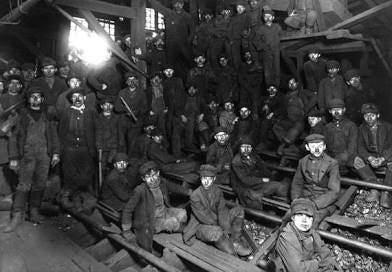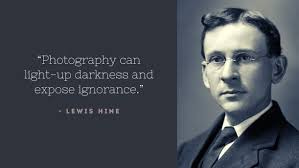Lewis Hine’s Child Labor Photographs: A Timeless Catalyst for Change, By Stephen Heins, The Word Merchant
It’s Relevance to Today’s Global Child Labor Crisis: A Call to Action.
Lewis Hine’s Child Labor Photographs: A Timeless Catalyst for Change
By Stephen Heins, The Word Merchant
In the early 20th century, Lewis Hine, an American photographer and sociologist, picked up his camera to capture images and ignite a movement. His haunting, evocative photographs of child laborers—young boys and girls toiling in factories, mines, and mills—exposed the grim realities of industrial America. Today, over a century later, Hine’s work remains a powerful reminder of the fight against child labor, resonating deeply with ongoing global efforts to protect children from exploitation.
A Lens on Injustice
Hine’s journey began in 1908 when he joined the National Child Labor Committee (NCLC) as a staff photographer. Armed with a bulky camera and an unyielding sense of purpose, he traveled across the United States, documenting children as young as five working grueling hours in hazardous conditions. His photographs captured the stark contrast between childhood innocence and the harsh environments these children endured—coal-dusted faces in Pennsylvania mines, tiny hands operating dangerous machinery in textile mills, and barefoot newsboys hustling on city streets.
What set Hine apart was his ability to humanize his subjects. He didn’t just photograph; he listened. He recorded names, ages, and stories, giving voice to the voiceless. Images like that of Addie Card, a 12-year-old spinner in a Vermont mill, or the young breaker boys in coal mines, weren’t just pictures—they were indictments of a system prioritizing profit over humanity. Hine’s captions, often laced with irony, underscored the absurdity of children performing adult labor, challenging viewers to confront their complicity.
A Spark for Reform
Hine’s photographs were more than art; they were humanistic activism. Displayed in exhibitions, published in newspapers, and circulated by the NCLC, his images shocked the public and lawmakers alike. They played a pivotal role in galvanizing support for child labor laws in the United States. By 1938, the Fair Labor Standards Act had established federal standards, including minimum working ages and limits on hours for children, reforms that Hine’s work had helped make possible.
His approach was revolutionary for its time. Hine understood that storytelling through images could shift public perception and policy. His work wasn’t just about exposing suffering but about demanding change. He said, “If I could tell the story in words, I wouldn’t need to lug around a camera.” His photographs did what words alone couldn’t—they made the invisible visible. He made “photo stories.”
Relevance to Today’s Global Child Labor Crisis
While Hine’s work targeted early 20th-century America, its impact transcends time and borders. According to the International Labour Organization (ILO), 160 million children worldwide are engaged in child labor as of 2025, with 79 million in hazardous work. From cobalt mines in the Democratic Republic of Congo to garment factories in Bangladesh, children continue to toil in conditions eerily reminiscent of Hine’s photographs.
Hine’s legacy offers inspiration and a blueprint for addressing today’s crisis. His work demonstrates the power of visual storytelling to raise awareness and drive action. Armedwith smartphones and social media, modern advocates echo Hine’s tactics, sharing images and stories to expose exploitation. Organizations like the ILO and UNICEF leverage multimedia campaigns to spotlight child labor, much like the NCLC used Hine’s photographs to rally support.
Moreover, Hine’s emphasis on dignity and individual stories remains critical. Today’s activists strive to amplify the voices of child laborers, ensuring they’re seen as people, not statistics. Initiatives like the ILO’s “Clear Cotton” campaign, which combats child labor in textile supply chains, or efforts to enforce ethical sourcing in industries like electronics, owe a debt to Hine’s pioneering approach. His work reminds us that change begins with visibility—making the world see the children behind the products we consume.
A Call to Action
Lewis Hine’s child labor photographs are more than historical artifacts; they’re a call to action that reverberates in 2025. They challenge us to confront the uncomfortable truth that child labor persists, often hidden in global supply chains. They urge us to support policies and organizations working to eradicate it, from stronger international labor standards to education programs that keep children in classrooms, not factories.
Hine’s legacy is a testament to the power of one person’s vision to change the world. His photographs didn’t just document an era—they reshaped it. As we navigate the complexities of modern child labor, let’s draw on Hine’s courage and creativity. By shining a light on today’s injustices, we can honor his work and ensure that every child has the chance to learn, play, and grow, free from exploitation.
In a world still grappling with child labor, Lewis Hine’s lens remains our guide—a beacon of hope, compassion, and unrelenting resolve.





